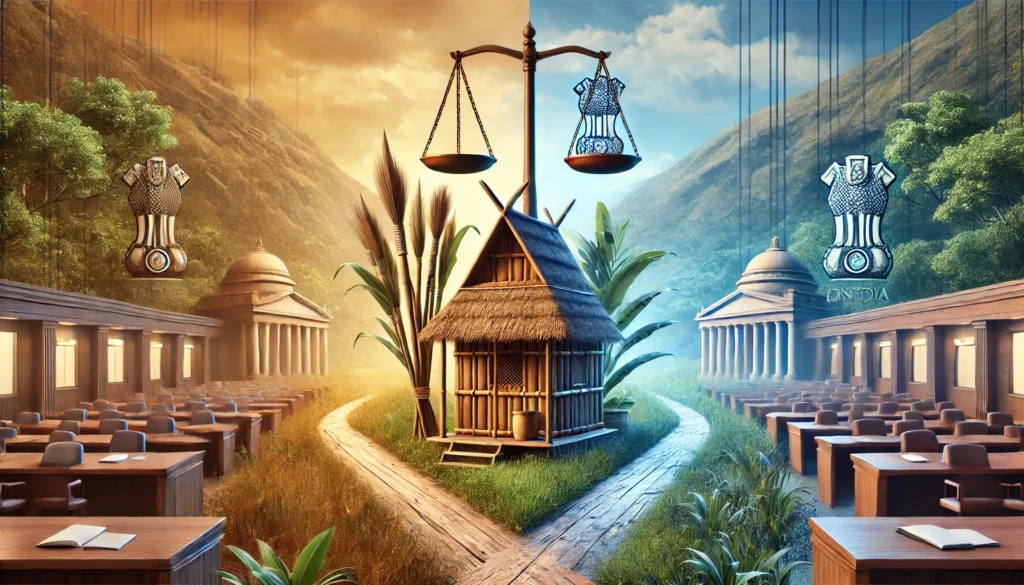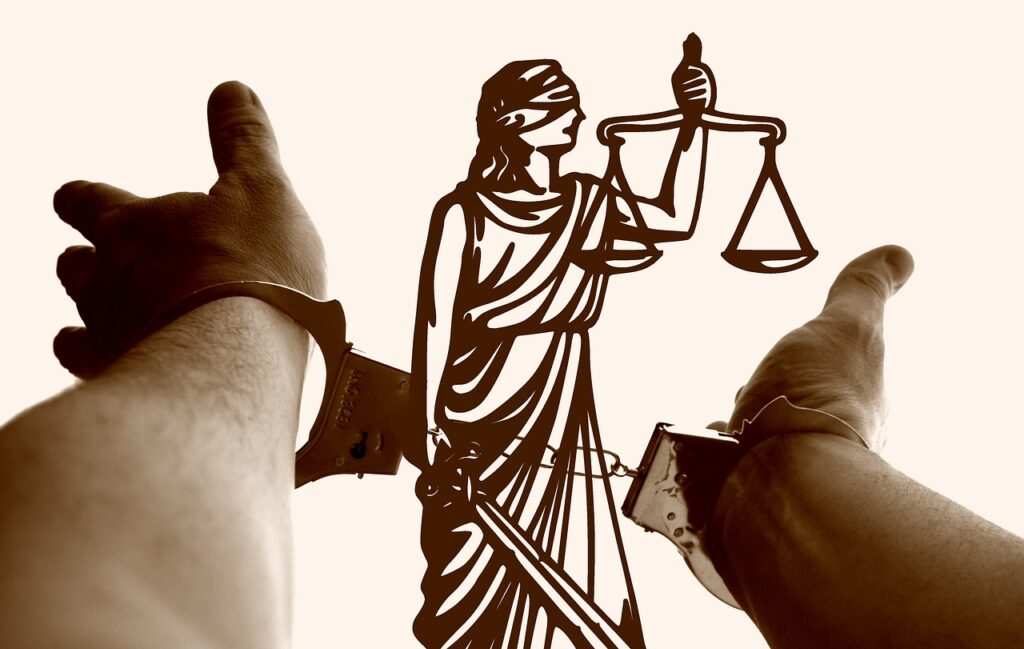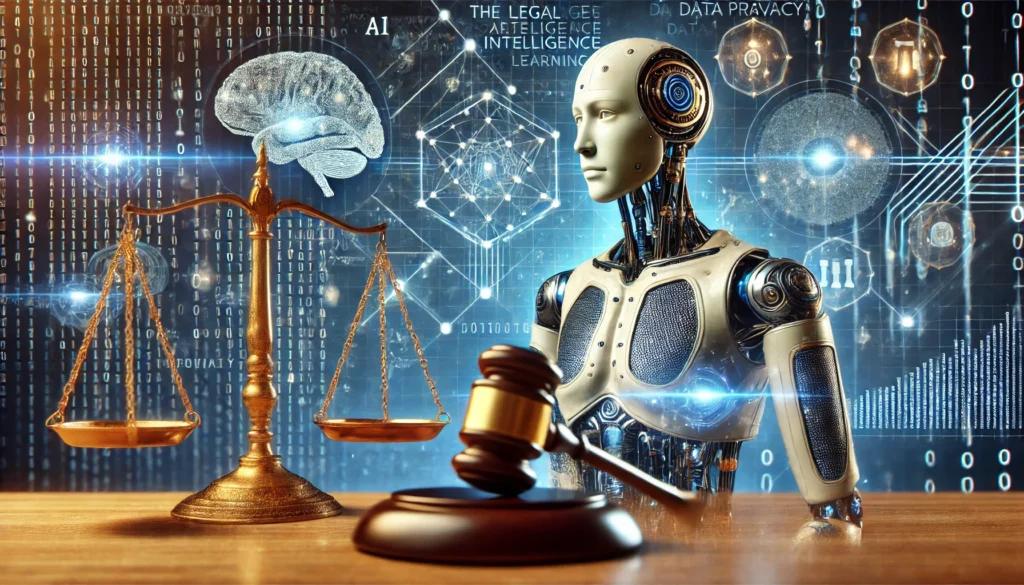Published on 15th August 2025
Authored By: Shruti Kumari
National Law University Meghalaya
Abstract
The vulnerabilities that poverty and childhood orphanhood often share have a substantial impact on human rights protections. These dual deprivations show up as limited access to social support, healthcare, education, and legal identity in India, where about 31 million children are orphaned or abandoned. Implementation issues still exist despite robust international frameworks like the Convention on the Rights of the Child (CRC) and domestic laws like the Integrated Child Protection Scheme (ICPS), the Juvenile Justice (Care and Protection of Children) Act, 2015 (JJ Act), and the Orphanages and Other Charitable Homes (Supervision and Control) Act, 1960 (Orphanages Act). Many impoverished orphans are rendered invisible and deprived because of these gaps, which create a legal and systemic void. This article explores the intersectionality of poverty and orphanhood through a human rights lens: conceptual definitions; systemic legal barriers; case studies from India; the role of non-state actors; and a roadmap toward reform grounded in justice, equity, and child dignity. Central recommendations include universal legal identity, strengthened guardianship mechanisms, unconditional social protection, institutional accountability, expansion of legal aid, and community-based care. India’s journey toward inclusive child welfare demands a holistic approach—one that transforms legislative ideals into enforceable, child-sensitive implementation.
Keywords
Poverty, Orphanhood, Child Rights, Legal Protection, Juvenile Justice Act, Human Rights, India, Legal Identity, Foster Care, Child Welfare Committees, Social Exclusion, Vulnerable Children, Legal Reform, Institutional Care, United Nations Convention on the Rights of the Child (CRC), NCPCR, Guardianship, Intersectionality, Child Protection Laws.
Introduction
With almost 31 million orphans and abandoned children, many of whom live in extreme poverty, India has more of these children than any other nation. Lack of parental support, legal invisibility, malnourishment, health crises, exclusion from school, and susceptibility to exploitation through child labor, human trafficking, and forced migration are just a few of the severe multifaceted deprivation these children experience[1]. Due to administrative obstacles, a lack of documentation, or institutionalized discrimination based on caste, gender, or disability, many people continue to live outside of formal care systems. [2]
Fundamental rights such as life and personal liberty (Article 21), education (Article 21‑A), health (as defined by Article 21), and protection from exploitation (Articles 23–24) are all guaranteed by the Indian Constitution, but enforcement of these rights is still lacking. [3] The Juvenile Justice Act of 2015, the Orphanages Act of 1960, the ICPS (2009), and other laws make up India’s child welfare framework. Studies, however, reveal persistent implementation issues, including understaffed Child Welfare Committees (CWCs), a lack of institutional oversight, and impoverished orphans’ lack of access to legal representation. [4]
To what extent does India’s legal system protect poor orphans is the query that this research aims to address. It argues that, despite normative frameworks, systemic problems like identity denial and a lack of legal support impede meaningful realization. By analyzing doctrine, case law, empirical data, and international guidance, it promotes legal reform based on a human-rights paradigm. In addition to avoiding exclusion and incorporating institutional responsibility, the route must transition from vague promises to legally binding care.
Conceptual Definitions and Rights Framework
The loss of one or both parents is referred to as “orphanhood” in international discourse; UNICEF makes a distinction between “single” and “double” orphans. [5] In a more general sense, children who are left behind by their guardians because of illness or poverty are effectively orphaned, even if their parents are still alive. [6] Access to fundamental socioeconomic rights is restricted by a profound layer of structural exclusion brought on by poverty.
Children not receiving family care must be protected, according to Article 20 of the Convention on the Rights of the Child (CRC), the standard international framework. Access to sufficient housing, food, and clothing is guaranteed by Article 27. [7] The right to health and a standard of living are highly valued in the ICESCR. [8] Identification requires legal recognition, which is guaranteed by Article 16 of the International Covenant on Civil and Political Rights. States are subject to these legally binding obligations.
Indian law includes:
Orphans and abandoned children are considered “children in need of care and protection” under Section 2(14) of the Juvenile Justice (Care and Protection of Children) Act, 2015 (“JJ Act”). It establishes CWCs, adoption provisions, foster care, and rehabilitation services.
State-level “Boards of Control” are empowered to supervise and run orphanages under the Orphanages Act of 1960.
The Integrated Child Protection Scheme (ICPS), which was implemented in 2009 to coordinate child protection across states, is implemented by District Child Protection Units (DCPUs). [11]
Children six to fourteen years old, including orphans, are entitled to free education under the Right to Education (RTE) Act of 2009. [12]
Free legal assistance for those in poverty, including minors who are orphaned, is required by the Legal Services Authorities Act of 1987. [13]
There are still implementation gaps despite these normative commitments. UNICEF India draws attention to structural problems with capacity, stewardship, and documentation. [14] CWCs frequently lack the resources needed to properly register orphans. NGOs issue warnings about orphanages and unmonitored institutions. [15] By overtaxing informal care and displacing some children from safety nets, the COVID-19 pandemic made these problems worse. [16]
The CPCR Act of 2005 established India’s National Commission for Protection of Child Rights (NCPCR), which oversees monitoring compliance. [17] Its influence is constrained, though, because functionality varies by state.
Structural Barriers and Intersectional Vulnerabilities
- Insufficient Recognition
Orphans cannot obtain citizenship, welfare benefits, school admission, or even legal guardianship without a birth certificate or Aadhaar. [18] Many children in states like Uttar Pradesh and Bihar are reportedly stateless within their own country because they do not have these documents. [19] - Insufficient Guardianship and Foster Care
Foster care, adoption, and institutional care are all covered under the JJ Act, but these services are not commonly accessible. Foster care programs are understaffed, and CWCs frequently postpone declarations. Around 20 Since they have no other caregivers, more than 90% of orphaned children continue to live in institutions. [21] - Supervision by Institutions
The Orphanages Act mandates that state boards approve and inspect children’s homes. [ 22] According to research demonstrating widespread non-compliance, unregistered homes operate unregulated, and inspections are brief. The COVID-19 pandemic resulted in delayed monitoring and welfare gaps. [23] - Insufficient Legal Assistance
NALSA mandates that Lok Adalats offer free legal assistance. [24] However, the majority of orphaned children, especially those in remote areas, lack access because of caste or gender-based discrimination, ignorance, and inadequate representation.[25] - Social Barriers and Gender
Children from marginalized castes, women orphans, children from tribal communities, and individuals with disabilities are further excluded. They are more likely to experience family dissolution, child labor, or marriage, and educational challenges. Thus, intersectionality emphasizes invisibility and deprivation.[26]
Case Studies: Implementation and Exclusion
Hyderabad’s Aarogyasri “Orphan Health Card” Initiative
The Telangana government in May 2025 extended Arogyasri health insurance to 2215 orphans, semi-orphans, and BPL children in CCI, which includes offering up to ₹10 lakh in tertiary cash-free care and monthly caretaker stipends. 27 Though the step is progressive in addressing exclusion, it covers only children in registered institutions and excludes those who are outside formal systems.
Kerala’s Snehapoorvam Scheme
BPL children and orphans can receive monthly financial assistance (₹300 to ₹1,000, depending on education level) through Kerala’s program, which was launched in 2012.^28 It demonstrates the effective implementation of statutory welfare in relation to documentation and institutional coordination.
UNICEF-CMC India Study (2013)
According to the 2013 UNICEF-CMC India Study, children who are orphaned and abandoned (OAC) and do not have biological caregivers—especially those who live in rural poverty—perform significantly worse academically than those who have family support.[29] Food insecurity, caregiver fatigue, and a lack of stimulation were all mentioned.
Sindhutai Sapkal: Local Guardianship
Sindhutai Sapkal (1948–2022), also known as the “Mother of Orphans,” reared over 1,500 children in Maharashtra by herself. 30 Her study highlights the gaps in state care and the value of informal caregiving. However, dependence on individuals highlights the shortcomings of the state’s infrastructure.
Non-State Actors: NGOs, Faith-Based Institutions, and Grassroots Groups
In order to close systemic gaps, NGOs and civil society organizations are essential. They provide case documentation, foster care support programs, institutional supervision, alternative care training, and legal aid clinics. However, not all of them function according to human rights principles; some orphanages have been linked to unmonitored human trafficking and abuse, which emphasizes the necessity of regulation. [31]
Sometimes “mercy” takes precedence over rights in charitable trusts and religious organizations. Unmonitored NGOs may unintentionally encourage exploitation and dependency, according to “Poverty Inc.”[32]
Legal reforms, including the Central Adoption Resource Authority’s (CARA) simplification of adoption and the NCPCR’s mobilization to supervise its implementation, have been spurred by the comprehensive advocacy of child rights coalitions. However, civil society and the steady state don’t often work together.
Legal Reform: A Rights-Based Roadmap
India must embrace a rights-based paradigm in order to adequately safeguard impoverished orphans:
Universal Legal Identity: Mobile registration units must be available in rural areas, and CWCs and CCIs must mandate the registration of Aadhaar and birth certificates.
Foster care and guardianship made easier: Make use of CWC orders to speed up guardianship and provide foster families with financial and mentoring support.
Institutional Accountability: State Boards are required to conduct routine audits, publish yearly reports on orphanages, and impose sanctions for infractions.
Conditional Cash Transfers (CCTs): Offer educational scholarships to every state, expand Snehapoorvam programs to other states, and include orphans in them.
Legal Aid Expansion: State legal services and NALSA must establish kid-friendly legal processes and conduct outreach initiatives for orphaned children.
Special steps to shield female orphans from early marriage, educate them, and equip them with vocational skills are all part of gender-responsive interventions. You must pay attention to intersections.
Decentralized Care Protocols: Encourage community-based care and deinstitutionalization in accordance with the JJ Act’s emphasis on the child’s best interests. Studies show that institutional care negatively impacts emotions and cognition when compared to kinship-based settings. [33]
Enforcement and Accountability
Multi-tiered supervision is required for implementation:
An annual compliance audit involving all states and CCIs must be published by the NCPCR.
State governments are required to submit beneficiary data, such as guardianship, birth registration, and Aadhaar, annually.
Judiciary: As demonstrated by Sheela Barse and India Legal’s Nobody’s Child investigation, continue your judicial activism through PILs.
Civil society and the media should keep an eye on the conditions in orphanages and well-publicized systemic flaws.
Conclusion
Orphanhood and poverty together result in severe, systemic disenfranchisement. India’s legal systems are not always effective in practice, despite their theoretical strength. Legal reform that is child-sensitive, equity-driven, and rights-based is necessary for transformative change. We urgently need gender-responsive policies, universal identity, social protection, legal aid, streamlined guardianship, institutional accountability, and community-based solutions. Orphans should receive citizenship, dignity, education, and legal protection in addition to charity. India has a moral and constitutional obligation to do this.
References
- UNICEF, The State of the World’s Children 2023, at 7, https://www.unicef.org/reports.
- Anmol Shekhar Srivastava & Jaya Bharti, Strengthening Child Welfare Policies for Indian Orphaned and Abandoned Children, EPRA Int’l J. of Env’ Econ. Com. & Soc. Sci. (Mar. 2025).
- Convention on the Rights of the Child arts. 16, 20, 27, Nov. 20, 1989, 1577 U.N.T.S. 3.
- International Covenant on Economic, Social and Cultural Rights, Dec. 16, 1966, 993 U.N.T.S. 3.
- International Covenant on Civil and Political Rights, Dec. 16, 1966, 999 U.N.T.S. 171.
- Juvenile Justice (Care and Protection of Children) Act, No. 2 of 2016, 2(14), India Code (2016).
- Orphanages and Other Charitable Homes (Supervision and Control) Act, No. 45 of 1960, India Code (1960).
- Integrated Child Protection Scheme (ICPS), Ministry of Women & Child Development (2009), https://wcd.nic.in/integrated-child-protection-scheme.
- Right of Children to Free and Compulsory Education Act, No. 35 of 2009, India Code (2009).
- Legal Services Authorities Act, No. 39 of 1987, India Code (1987).
- UNICEF India, Child Protection Overview, https://www.unicef.org/india/what-we-do/child-protection (last visited June 21, 2025).
- Times of India, Telangana Extends Aarogyasri to 2,215 Orphans in Institutions, TIMES OF INDIA (May 18, 2025), https://timesofindia.indiatimes.com.
- Government of Kerala, Snehapoorvam Scheme Guidelines, https://kssm.kerala.gov.in/snehapoorvam (last visited June 21, 2025).
- Ayyapan, Kerala Has Fewer Orphans Now, DECCAN CHRONICLE (Jan. 5, 2017), https://www.deccanchronicle.com.
- UNICEF & Christian Medical College Vellore, Understanding the Situation of Orphaned and Abandoned Children in India (2013).
- Sindhutai Sapkal Biography, WIKIPEDIA, https://en.wikipedia.org/wiki/Sindhutai_Sapkal (last visited June 21, 2025).
- United Nations Office on Drugs and Crime (UNODC), The Vulnerability of Orphans in Institutional Care, https://www.unodc.org (2022).
- Child Rights International Network (CRIN), Institutional Care in Brazil: Challenges and Reform (2020), https://home.crin.org.
- Human Rights Watch, Letting the Future Go: The Exclusion of Orphans in Africa’s Land Reforms (2021), https://www.hrw.org.
- Supreme Court of India, Sheela Barse v. Union of India, (1986) 3 S.C.C. 596.
- National Commission for Protection of Child Rights (NCPCR), WIKIPEDIA, https://en.wikipedia.org/wiki/National_Commission_for_Protection_of_Child_Rights (last visited June 21, 2025).
- India Legal, Nobody’s Child – Orphanages and Neglected Children, INDIA LEGAL (2021), https://www.indialegallive.com.
- National Legal Services Authority (NALSA), Free Legal Aid for Children, https://nalsa.gov.in (last visited June 21, 2025).
- Michael Matheson Miller, Poverty, Inc. (Acton Institute Film, 2014), available at https://www.povertyinc.org.
- The Wire Staff, Explained: Why India’s Foster Care System Is Broken, THE WIRE (Jan. 11, 2024), https://thewire.in.
- India Child Protection Forum, Aadhaar Exclusion Among Vulnerable Children, POLICY BRIEF (2022), https://www.childprotectionforum.in.
- Human Rights Watch, COVID-19 and Children’s Rights in India: Missed Protections, HRW (2022), https://www.hrw.org.
- Ministry of Women and Child Development, JJ Act 2015 – Implementation Guidelines, https://wcd.nic.in.
- UNICEF, Education and Marginalized Children in India (2021), https://www.unicef.org/india.
- Save the Children India, Abandoned or Invisible: Forgotten Children in India’s Institutions (2022), https://www.savethechildren.in.
- The Hindu Bureau, Child Welfare Committees Understaffed, Says Govt. Report, THE HINDU (Nov. 2023), https://www.thehindu.com.
- Centre for Child Rights, State of Child Protection in India 2023, NLU Odisha (2023), https://nluo.ac.in.
- India Legal, India & Japan Grapple With Rise in Orphaned & Neglected Children, YOUTUBE (Apr. 30, 2023), https://www.youtube.com/watch?v=Rj6x_vI7_fM.




